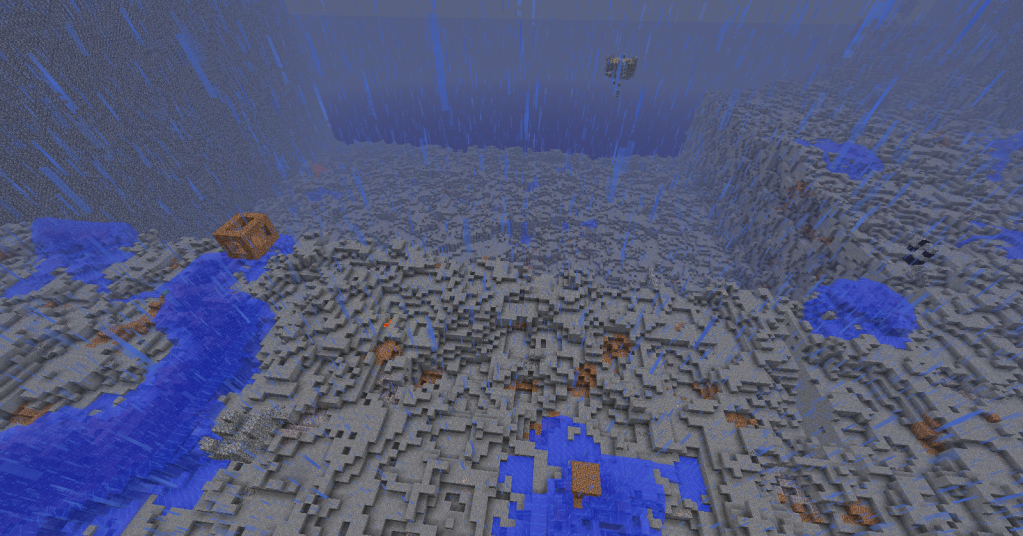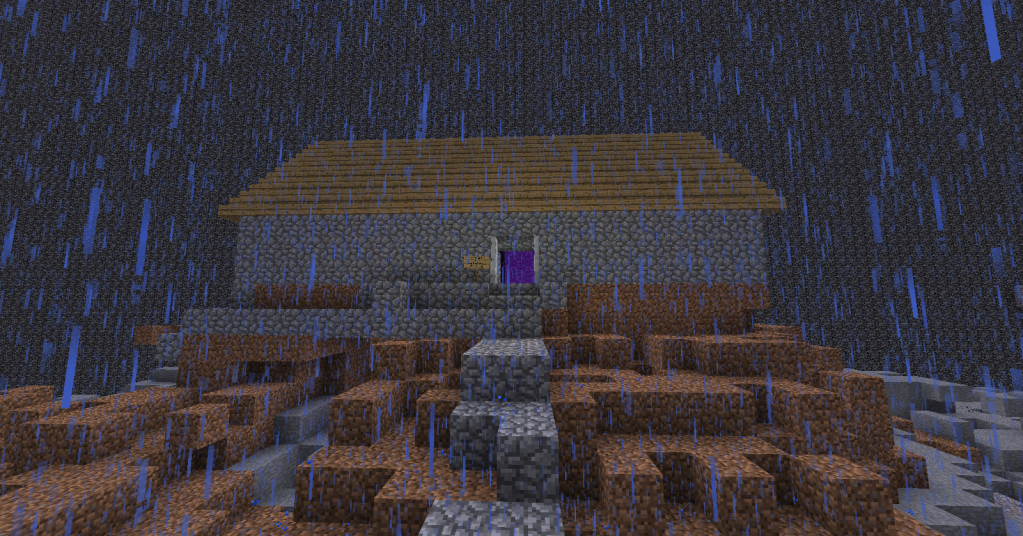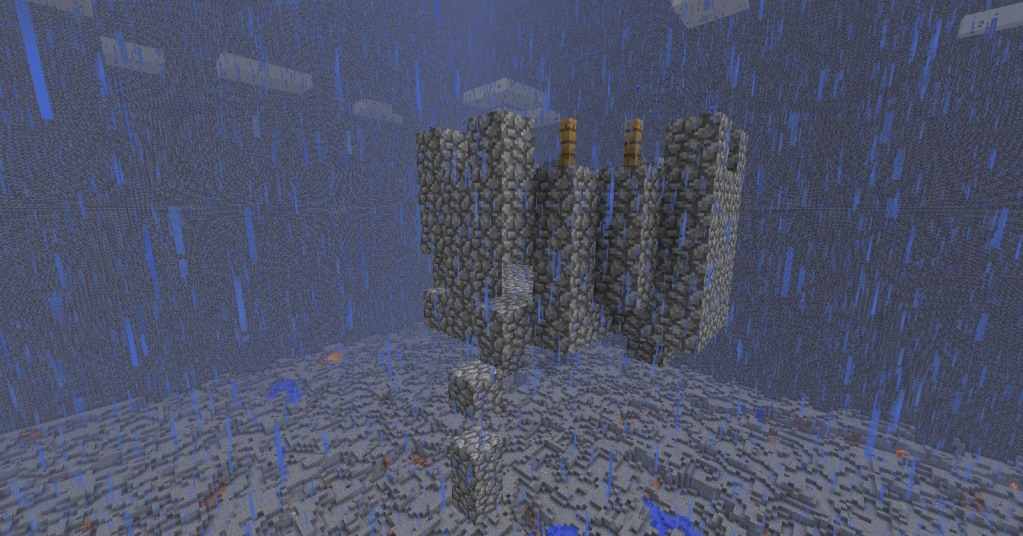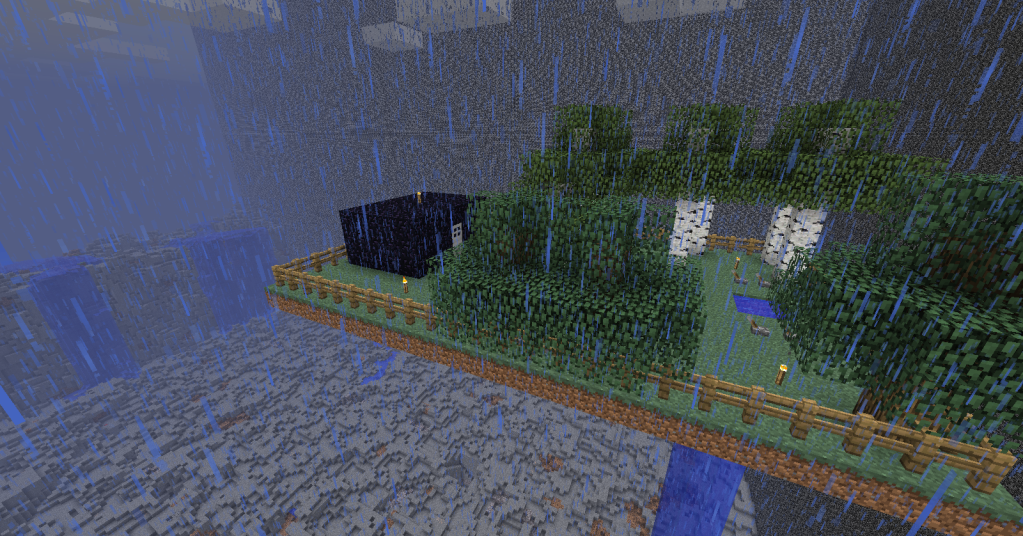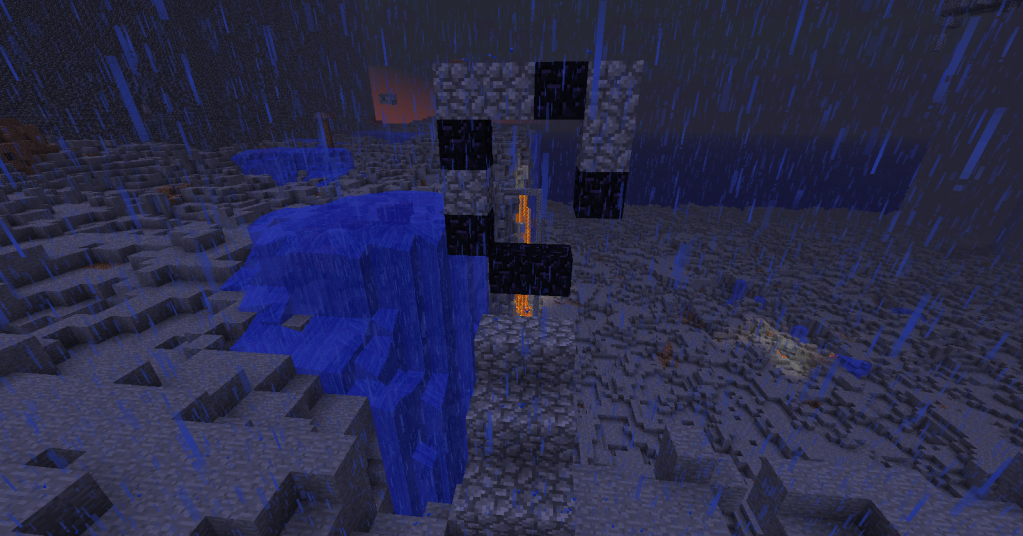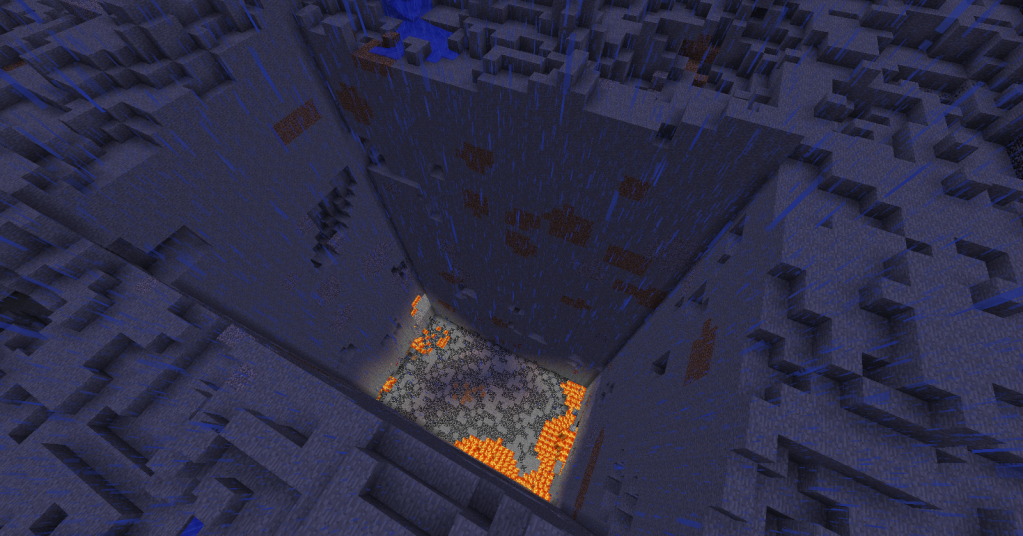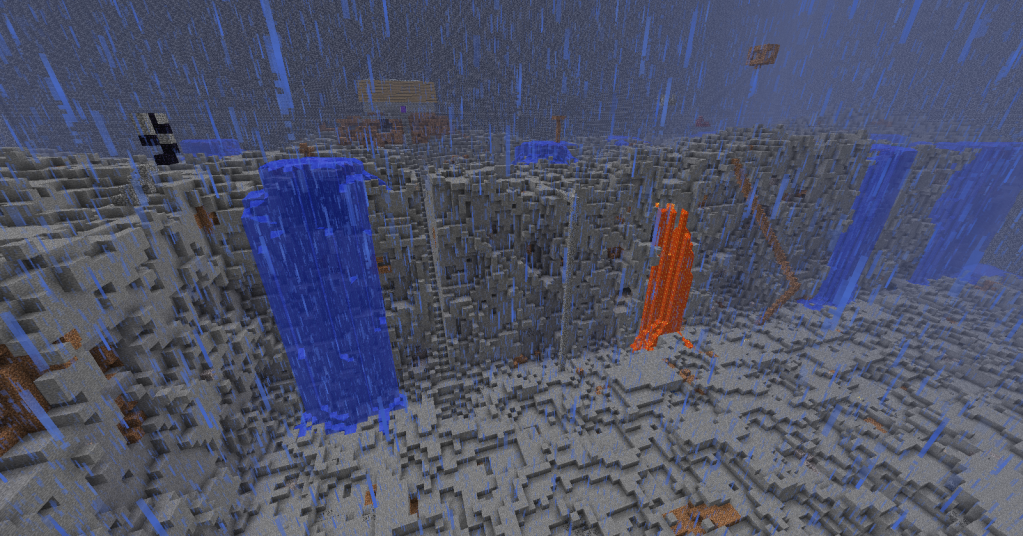Closed Map Experiment
Posted: Sun Aug 19, 2012 10:41 pm
I'm reposting this from the Minecraft forums, because it's awesome and I want to hear your guys' opinions.
If you were to catch a glimpse of this world you would figure that someone got out of control with TNT and made a giant scar of the whole world. The results look very similar. It’s something even scarier though. Something worse. What you’re looking at is the result of human interaction with limited resources. In a very coordinated experiment 30 players spent 2-5 hours playing in a 350x350 world trapped in bedrock. To keep everything fair the server was only running when everyone was available to play. These screenshots come from 2 months after the experiment started. I would personally like to thank everyone that participated (who wished to stay anonymous). To make things more organized world chat use was discouraged unless you had a global message. Communication was to be minimal and done through third party programs. The limited/restricted communication made groups/clans/guilds possible.
The players were unaware of what I was testing; they went into the server with the following rule: “Never leave the bedrock walls”. Some players realized the challenge at hand immediately, but most were unaware of how devastating the consequences of their actions would be. First resource to go was clay, clay became completely depleted in three days. Brick houses did not last long and in most cases were impossible to complete. The loss of a resource such as clay was a small warning most players missed. In the first week trees became rare. Trees never left the map completely but wood being an essential part of game progression in Minecraft made saplings worth more. This is the point in the game where players banded together into smaller groups with the goal of working together to build stuff. Four large clans emerged. “The Brotherhood”, “The Axe”, “The Dwarves” and the most successful “Merchant’s Guild”. During this time they co-existed peacefully with minor fights over trees and saplings, most did well with their own tree farms. Strip mining began. Resources like iron were abundant and most got wasted into weapons and armor. During this time iron was running out and the only practical use of it was buckets/pickaxes for diamond and doors were plausible due to the need for protection. It should be obvious that Diamonds only use was obsidian which would be a great for protection. Diamonds being extremely rare made them already valuable, but the players being aware that the supply was limited made it a rush to find them as fast as possible. Within 2 weeks production was flying. There was a local Nether Portal which was useful because it supplied an endless resource to build with that had no repercussions upon the map. The portal didn’t make it a week, soon the obsidian was stolen by The Brotherhood and used in there castle. The Merchant’s Guild made a quick profit off of this by having the only optional Nether Portal while resources like diamonds became rarer. The Merchants Guild was efficient and used trade to strive in this harsh world. They would trade netherack/cobblestone/rare ores for usable materials such as saplings/wood/dirt/string/wool/sand/etc.
3 weeks into the expirment flowers were gone forever, sand was deplete making glass rare and hard to replace, and obsidian was un-minable for most players due to a lack of diamond. The players resorted to war to find diamonds. The four clans raided each other bases and griefed each other. This war went on for a few days and The Axe had lost their castle completely. The Brotherhood had to rebuild a very broken town. The Dwarves took minimal damage due to their underground sub-systems and the difficult nature to destroy caves. The Merchant’s Guild took no damage because they won over their fights with complex trade agreements and treaties. At this point The Axe had disbanded. Their members took to their own trying to make it on their own. This left a lot of griefing for trees and trade with the Merchant’s Guild abundant. Only two people were clearly ahead at this point, (aside from the merchant’s guild doing well too). They earned the name (pardon the language), the ****** griefers. These two players had immediately realized what would happen to the map on day one and began to construct an easily defendable a base that was self-sufficient and renewable. They built there base on a giant dirt platform in the sky. They made it come off of a mountain so the grass would grow onto it. When the grass had grown onto their base (A few days in), they had already acquired the needed materials for sticky pistons and buckets. They created a water elevator that could be toggled with the pistons and began destroying the mountain. They dug all the earth out from around them and made their base impossible to reach without the use of the water elevator or towering up. From the first week in they began systematically depleting resources in a way that would set the other players behind. Glass windows were broken, trees and saplings were stolen, massive amounts of dirt were farmed (the importance of this will be revealed later) and they used their power to persuade the other players. The Merchant’s Guild paid an anti-griefing tax by supplying the ****** griefers with materials that were rare or hard to find. It started with trees/iron/diamond and by the end of the experiment it was things like arrows/flint/string. Four weeks in strip mines had torn open a lot of the land, water was running all over the place (most people lacked buckets) and the most game-breaking element occurred; dirt was being lost. Well not dirt itself in entirety, but the good surface dirt. The dirt with GRASS on it. At this point players forgot about trees and mining but wars over surfaces with grass broke out. The Dwarves even showed interest and tried to create establishments on the surface but had trouble handling holding ground. The Merchant’s Guild had not thought ahead but began gathering as many drops from animals spawned on grass to be traded as rarities in the future. The brotherhood held a small section of grass off from griefers the most successfully. The ****** griefers had no trouble with this because there base was situated upon a giant floating chuck of grass, so they made it their mission to destroy all grass on the map and reserve the power of food to themselves only. The Brotherhood held their small piece of grass but were defending constantly and as a result their base became very broken and they rebuilt in a way to defend the dirt only.
Five weeks into the experiment a lot of players had lost the will to play. Most players resorted to staying underground and endless 2x1 tunnels were formed, giant chasms were found by players overmining and ultimately a large majority of cobblestone was lost through lava and the players fighting each other. Due to massive mining to and strip mines the corner of the map supporting the ****** griefers base sunk farther and farther down to the bedrock, leaving a noticeable drop in elevation between the two corners of the map. Buildings made out of dirt started showing up on the torn earth because most players lacked the resources to make pickaxes and couldn’t meet the prices of the Merchant’s Guild. These buildings were built with the only purpose of protection from monsters at night since the map became un-survivable during the night. At this point the large loss of land in the bottom half the map did one purpose. Eliminate the dwarves who were housed there. (I still can’t believe the amount of stone removed and lost in that area, It’s a devastating amount and continued until the 2 months were up). At this point a cycle was emerged, the players were fighting for the last bit of grass on the map (disregarding the griefers base that was inaccessible). But most of them were either trying to mine cobblestone for more trade with the Merchant’s Guild for sticks for more pickaxes or trying to survive the night in dirt houses. It was a vicious cycle that was barely profitable. But a pattern did emerge. The players were effectively working together to survive the night. While there was still rampant war and grief the players that had little had banded together to try to survive the harsh environment.
The experiment was up before more testing could be done, but I ask you. If the walls were torn down one day and the players were free to the unlimited resources of Minecraft how would they react? Do you think they would work together and try to keep all the resources balanced or would they play the same way without regard for their environment or each other? Though in Minecrafts infinite world it would be impossible to destroy everything, do you think the disaster would slowly re-occur? I think this experiment has been a successful statement on the human condition and human interaction with the environment.
Hidden/Spoiler:
The players were unaware of what I was testing; they went into the server with the following rule: “Never leave the bedrock walls”. Some players realized the challenge at hand immediately, but most were unaware of how devastating the consequences of their actions would be. First resource to go was clay, clay became completely depleted in three days. Brick houses did not last long and in most cases were impossible to complete. The loss of a resource such as clay was a small warning most players missed. In the first week trees became rare. Trees never left the map completely but wood being an essential part of game progression in Minecraft made saplings worth more. This is the point in the game where players banded together into smaller groups with the goal of working together to build stuff. Four large clans emerged. “The Brotherhood”, “The Axe”, “The Dwarves” and the most successful “Merchant’s Guild”. During this time they co-existed peacefully with minor fights over trees and saplings, most did well with their own tree farms. Strip mining began. Resources like iron were abundant and most got wasted into weapons and armor. During this time iron was running out and the only practical use of it was buckets/pickaxes for diamond and doors were plausible due to the need for protection. It should be obvious that Diamonds only use was obsidian which would be a great for protection. Diamonds being extremely rare made them already valuable, but the players being aware that the supply was limited made it a rush to find them as fast as possible. Within 2 weeks production was flying. There was a local Nether Portal which was useful because it supplied an endless resource to build with that had no repercussions upon the map. The portal didn’t make it a week, soon the obsidian was stolen by The Brotherhood and used in there castle. The Merchant’s Guild made a quick profit off of this by having the only optional Nether Portal while resources like diamonds became rarer. The Merchants Guild was efficient and used trade to strive in this harsh world. They would trade netherack/cobblestone/rare ores for usable materials such as saplings/wood/dirt/string/wool/sand/etc.
3 weeks into the expirment flowers were gone forever, sand was deplete making glass rare and hard to replace, and obsidian was un-minable for most players due to a lack of diamond. The players resorted to war to find diamonds. The four clans raided each other bases and griefed each other. This war went on for a few days and The Axe had lost their castle completely. The Brotherhood had to rebuild a very broken town. The Dwarves took minimal damage due to their underground sub-systems and the difficult nature to destroy caves. The Merchant’s Guild took no damage because they won over their fights with complex trade agreements and treaties. At this point The Axe had disbanded. Their members took to their own trying to make it on their own. This left a lot of griefing for trees and trade with the Merchant’s Guild abundant. Only two people were clearly ahead at this point, (aside from the merchant’s guild doing well too). They earned the name (pardon the language), the ****** griefers. These two players had immediately realized what would happen to the map on day one and began to construct an easily defendable a base that was self-sufficient and renewable. They built there base on a giant dirt platform in the sky. They made it come off of a mountain so the grass would grow onto it. When the grass had grown onto their base (A few days in), they had already acquired the needed materials for sticky pistons and buckets. They created a water elevator that could be toggled with the pistons and began destroying the mountain. They dug all the earth out from around them and made their base impossible to reach without the use of the water elevator or towering up. From the first week in they began systematically depleting resources in a way that would set the other players behind. Glass windows were broken, trees and saplings were stolen, massive amounts of dirt were farmed (the importance of this will be revealed later) and they used their power to persuade the other players. The Merchant’s Guild paid an anti-griefing tax by supplying the ****** griefers with materials that were rare or hard to find. It started with trees/iron/diamond and by the end of the experiment it was things like arrows/flint/string. Four weeks in strip mines had torn open a lot of the land, water was running all over the place (most people lacked buckets) and the most game-breaking element occurred; dirt was being lost. Well not dirt itself in entirety, but the good surface dirt. The dirt with GRASS on it. At this point players forgot about trees and mining but wars over surfaces with grass broke out. The Dwarves even showed interest and tried to create establishments on the surface but had trouble handling holding ground. The Merchant’s Guild had not thought ahead but began gathering as many drops from animals spawned on grass to be traded as rarities in the future. The brotherhood held a small section of grass off from griefers the most successfully. The ****** griefers had no trouble with this because there base was situated upon a giant floating chuck of grass, so they made it their mission to destroy all grass on the map and reserve the power of food to themselves only. The Brotherhood held their small piece of grass but were defending constantly and as a result their base became very broken and they rebuilt in a way to defend the dirt only.
Five weeks into the experiment a lot of players had lost the will to play. Most players resorted to staying underground and endless 2x1 tunnels were formed, giant chasms were found by players overmining and ultimately a large majority of cobblestone was lost through lava and the players fighting each other. Due to massive mining to and strip mines the corner of the map supporting the ****** griefers base sunk farther and farther down to the bedrock, leaving a noticeable drop in elevation between the two corners of the map. Buildings made out of dirt started showing up on the torn earth because most players lacked the resources to make pickaxes and couldn’t meet the prices of the Merchant’s Guild. These buildings were built with the only purpose of protection from monsters at night since the map became un-survivable during the night. At this point the large loss of land in the bottom half the map did one purpose. Eliminate the dwarves who were housed there. (I still can’t believe the amount of stone removed and lost in that area, It’s a devastating amount and continued until the 2 months were up). At this point a cycle was emerged, the players were fighting for the last bit of grass on the map (disregarding the griefers base that was inaccessible). But most of them were either trying to mine cobblestone for more trade with the Merchant’s Guild for sticks for more pickaxes or trying to survive the night in dirt houses. It was a vicious cycle that was barely profitable. But a pattern did emerge. The players were effectively working together to survive the night. While there was still rampant war and grief the players that had little had banded together to try to survive the harsh environment.
The experiment was up before more testing could be done, but I ask you. If the walls were torn down one day and the players were free to the unlimited resources of Minecraft how would they react? Do you think they would work together and try to keep all the resources balanced or would they play the same way without regard for their environment or each other? Though in Minecrafts infinite world it would be impossible to destroy everything, do you think the disaster would slowly re-occur? I think this experiment has been a successful statement on the human condition and human interaction with the environment.
Hidden/Spoiler:
